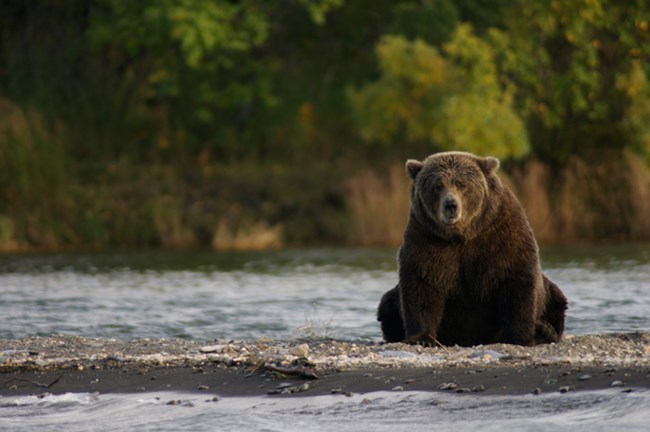Bear Watching in Katmai National Park and Preserve - Katmai National Park & Preserve (U.S. National Park Service) (original) (raw)

Katmai National Park and Preserve offers spectacular bear viewing opportunities.
NPS/R. Wood
When most people envision Katmai, they think of bears. Katmai is one of the premier brown bear viewing areas in the world. About 2,200 brown bears are estimated to inhabit the park, and more bears than people are estimated to live on Alaska Peninsula.
As many bear populations around the world decline, Katmai provides some of the few remaining unaltered habitats for these amazing creatures. At Katmai, scientists are able to study bears in their natural habitat, visitors are able to enjoy unparalleled viewing opportunities, and the bears are able to continue their life cycle largely undisturbed.
Nurturing this relationship between people and bears is the key to Katmai's success as a bear-viewing destination. Rangers, scientists, and the public work together to maintaining this fragile balance. It is important that all who visit Katmai respect bears and are armed with the knowledge to stay safe in bear country. The urge to take the perfect photograph or maintain the best fishing hole with your fly rod can be strong, but bears need space to sleep, eat, rest, travel, and play. By recognizing the needs of the bears and giving them space, each of us plays a role in keeping bears wild.
Where Can I See Bears?
A bear's waking hours are often dominated by their search for food. Outside of their denning season, bears predictably congregate in food rich areas throughout Katmai. Some areas of Katmai National Park, like the food rich Pacific coast, support some of the highest densities of bears ever documented. Other areas of the park with little food, such as the Valley of Ten Thousand Smokes, support only a few bears in any season.
If you know what foods bears prefer to eat and when that food is most abundant, accessible, and nutritious, then you will be able to find many areas in Katmai to observe these fascinating animals.
Bear Watching at Brooks Camp
At Brooks Camp, brown bears congregate to feed on sockeye salmon in the Brooks River. Four wildlife viewing platforms along the river offer safe and spectacular wildlife viewing opportunities while minimizing our potential impact on the bears. For more information about bear watching at Brooks Camp, see Katmai's park guide, The Novarupta, or download the brochure, Bear Viewing at Brooks Camp.
Other Bear Watching Destinations in Katmai
There are many, many backcountry locations that offer bear watching opportunities in season. In fact, the Pacific Coast of the park harbors some of the highest densities of bears anywhere on the planet. However, thick vegetation and rugged terrain can make seeing those bears difficult.
For many people the most rewarding backcountry bear watching locations are where bears feed on sedges, clams, and salmon. In spring and early summer, bears migrate to open meadows to feed on sedges and dig for clams on the nearby mudflats. Later in the summer and fall, bears are more easily and consistently seen along salmon streams.
The table provided below shows the best typical times for bear viewing at a few specific and popular areas in Katmai National Park and Preserve. For guides and/or transportation to bear viewing areas, see the
list of commercial operators authorized to provide bear viewing trips in Katmai National Park and Preserve.
Watch the Bears of Brooks Camp Online!
Don't miss a moment of the action on the Brooks River. Now you can follow the lives of the brown bears of Brooks River anywhere with an internet connection. Katmai National Park and explore.org have partnered to bring the bears to you. Watch the bears live!